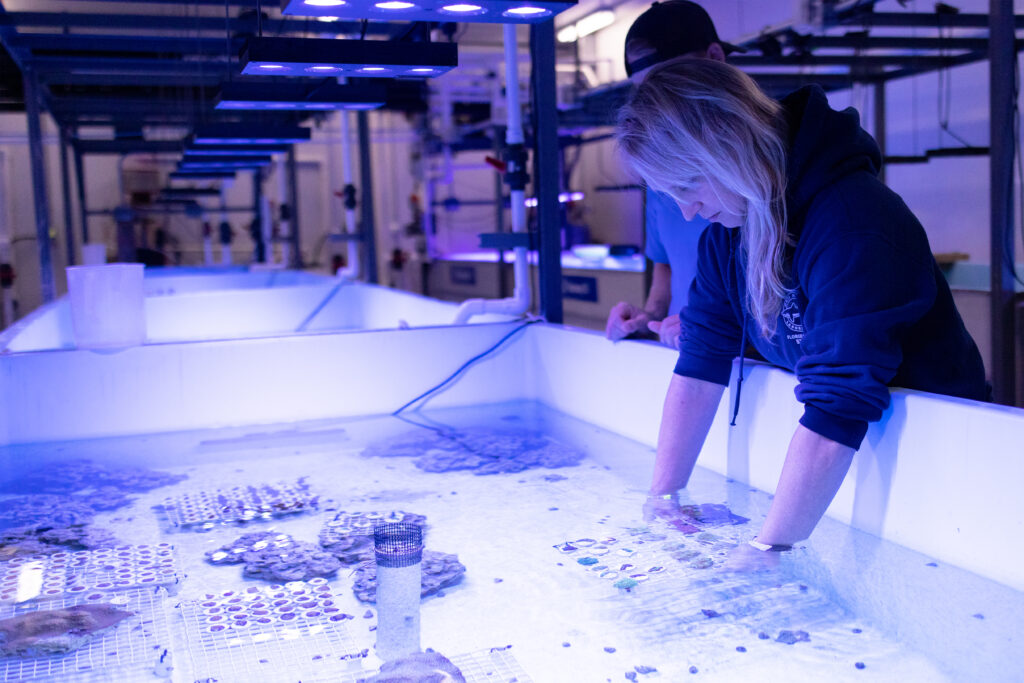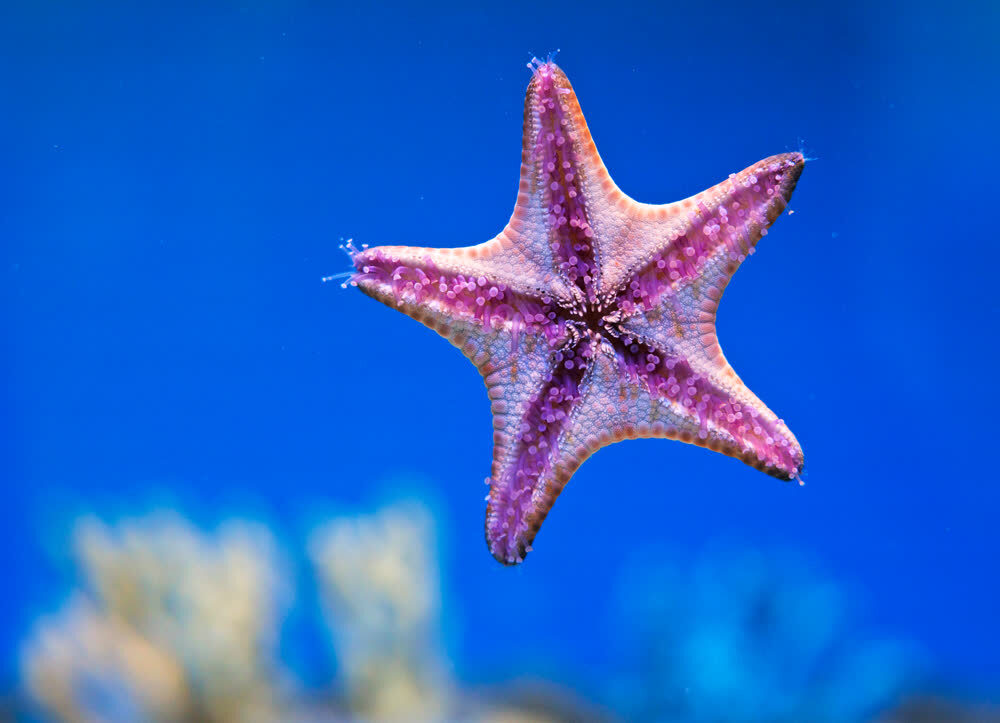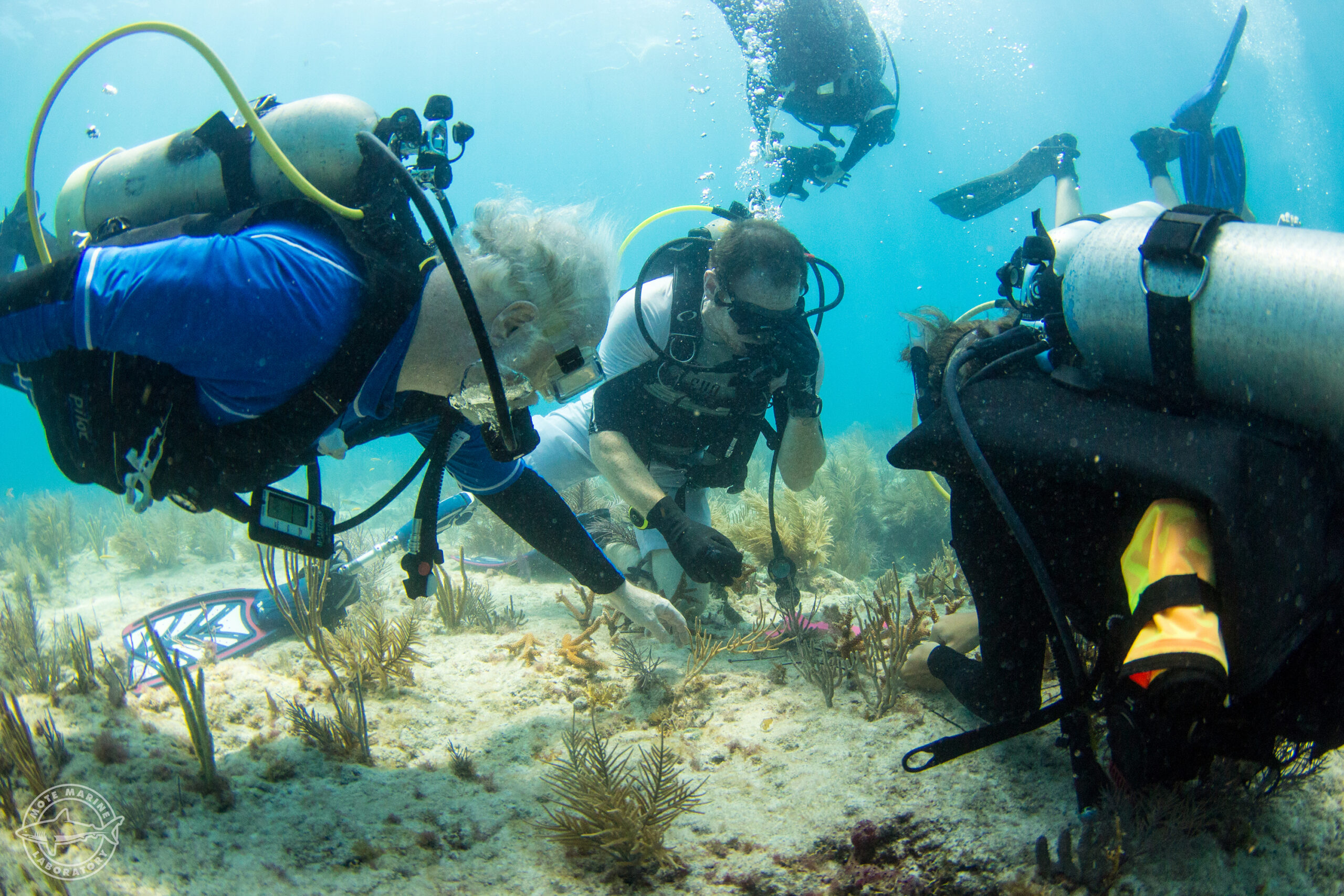Coral Gene Bank Internship
Mote’s International Coral Gene Bank is designed to be a safe haven for corals from Florida’s coral reef and Caribbean reefs, with eventual expansion into the Indo-Pacific regions of the world. The ultimate goal is to hold interesting genotypes of multiple species in triplicate; one copy of each genotype into three separate systems for complete redundancy.
Currently at the Gene Bank there are four separate, ~1500 gallon (5700 L) recirculating holding systems, each consisting of four raceways and a sump. Each system is monitored via a Neptune Apex controller, with probes to monitor temperature, pH, conductivity (salinity), and oxidation-reduction potential (ORP). These parameters can be viewed in real time, remotely, and are setup to send alarms in case the probes detect any of these parameters wandering outside of predetermined limits. At full capacity, these systems are capable of holding up to 128 adult corals (~30cm x 30cm) or ~4000-7500 fragments.
The Gene Bank is also home to four dedicated ex-situ spawning systems. Specially designed to encourage coral gonad maturation, gametogenesis and synchronous spawning, the spawning systems are fine-tuned for replicating environmental/seasonal cues. Using this technology enables the Gene Bank to increase genetic diversity of the corals found to be interesting for restoration through our research.
The Coral Gene Bank internship is primarily a husbandry position, not research-based. Depending on the season, there may be research projects being conducted at the Gene Bank, but they will not be the focus of the internship.
The roles and responsibilities of an intern at Mote’s Coral Gene Bank include:
- Cleaning filter socks and pumps as needed
- Emptying protein skimmers
- Basic water quality sampling and recording
- Feeding corals
- System siphoning and cleaning
- Assisting with coral microfragmentation as needed
Qualifications:
- A willingness to learn
- Being okay with getting wet or dirty
- Able to perform some physical work (lifting buckets of water, etc.)
- Previous coral or aquatic experience is a bonus, but not necessary
The Coral Gene Bank accepts interns year-round, with an average internship length of 12 weeks. This is a full time internship. Hours are Monday-Friday from 8-5 with occasional weekends. Please note the majority of research activities are carried out at the Mote Aquaculture Park (MAP); a satellite site located in eastern Sarasota County, Florida, approximately 17 miles from the main laboratory. Interns must have their own transportation to/from this location since Sarasota’s public transportation system does not extend to the Park.




